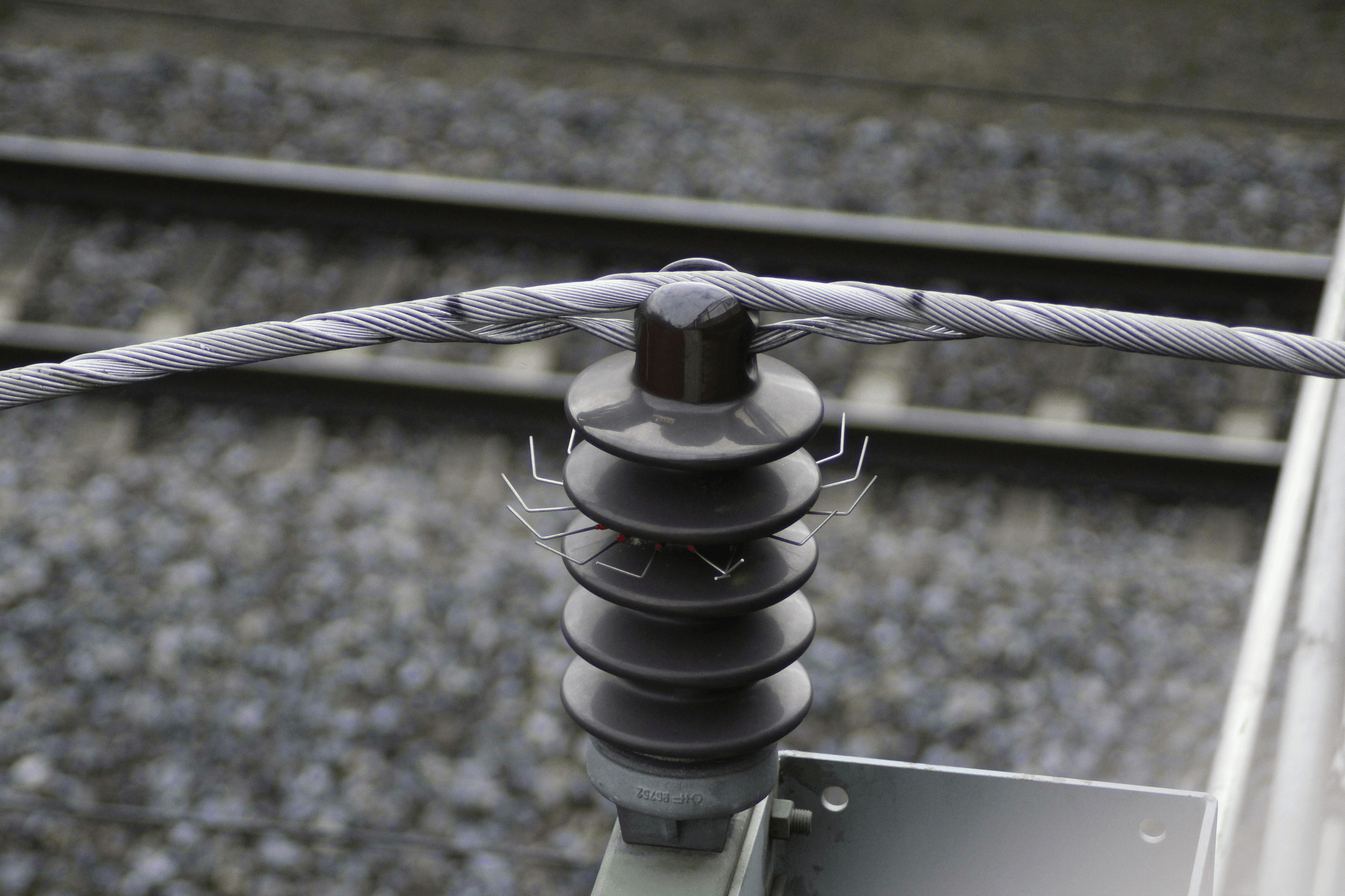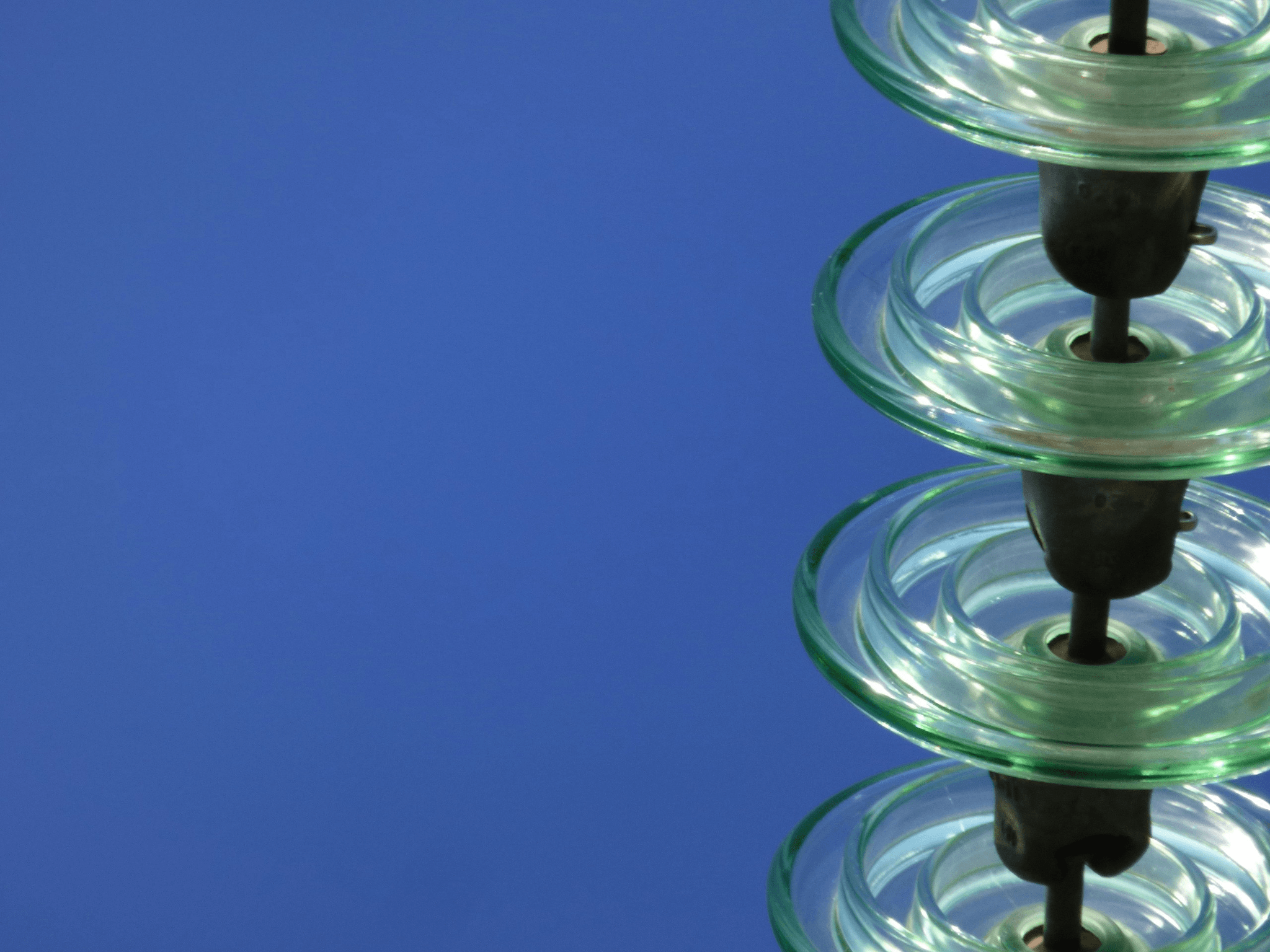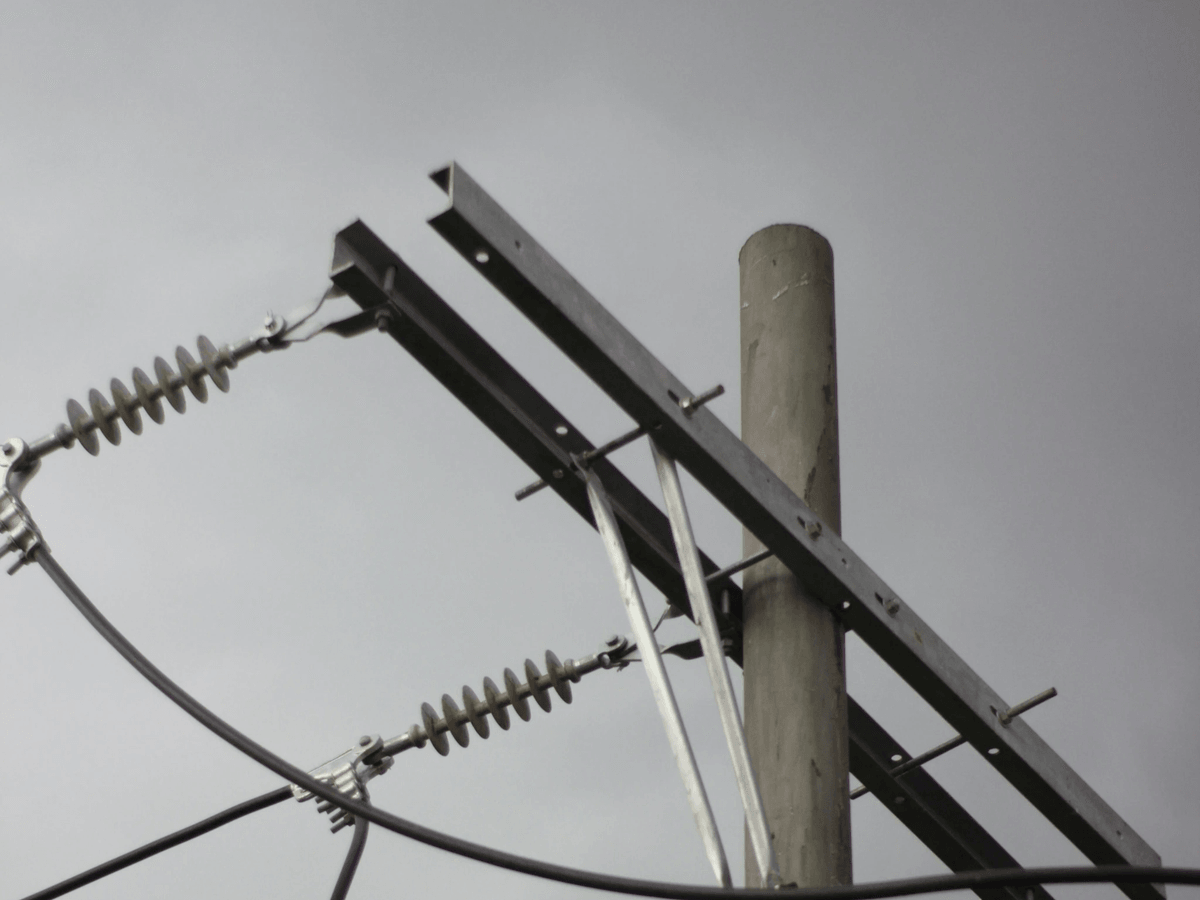Introduction

In the world of electrical engineering, overhead line insulators serve as unsung heroes, quietly ensuring the safety and efficiency of power transmission. These vital components work tirelessly to support powerline conductors while preventing unwanted electrical leakage to the ground. By understanding the various types of insulators and their unique characteristics, we can appreciate their crucial role in maintaining a reliable electricity supply.
Understanding Overhead Line Insulators
Overhead line insulators are designed to provide mechanical support and electrical insulation for conductors in power transmission systems. They come in various materials and designs, each tailored to specific environmental conditions and operational needs. An overhead line insulation supplier can guide you through selecting the right type for your project, ensuring optimal performance and longevity.
Importance of Insulation in Power Transmission
Insulation is essential in power transmission because it prevents short circuits and protects both equipment and personnel from high-voltage electricity. Without proper insulation, energy losses can occur due to leakage currents, leading to inefficiencies and increased operational costs. Furthermore, effective insulation contributes to system reliability by minimizing outages caused by environmental factors such as moisture or pollution.
Overview of Insulator Types
There are several types of insulators used in overhead lines: ceramic, glass, composite, and more specialized options like PG clamps in transmission lines or utility clamps for specific applications. Each type has its own set of advantages; for instance, ceramic insulators are known for their durability while composite ones offer lightweight flexibility. Understanding these differences is crucial when choosing the best electrical insulator materials for your infrastructure needs.
Ceramic Insulators

Ceramic insulators have long been a staple in the world of overhead line insulation, thanks to their durability and effectiveness. Made primarily from materials like porcelain, they are known for their excellent electrical insulating properties and resistance to environmental factors. These insulators come in various shapes and sizes, tailored to meet specific needs in power transmission systems.
Characteristics of Ceramic Insulators
One of the defining characteristics of ceramic insulators is their high dielectric strength, which allows them to withstand significant voltage levels without conducting electricity. Additionally, they exhibit remarkable resistance to weathering and UV radiation, making them ideal for outdoor applications where exposure is inevitable. Their robust construction also means that they can handle mechanical stresses, ensuring longevity even under challenging conditions.
Applications of Ceramic Insulators
Ceramic insulators are extensively used in high-voltage powerline applications due to their reliability and performance. They can be found supporting overhead lines across vast distances as well as being integral components in substations and transmission lines. Furthermore, many overhead line insulation suppliers offer specialized ceramic options designed for particular scenarios—like those involving PG clamps in transmission lines or guard rings that enhance safety.
Advantages and Disadvantages
The advantages of ceramic insulators include their excellent electrical properties, durability against extreme weather conditions, and minimal maintenance requirements once installed—making them a favorite among utility companies. However, there are some disadvantages; for instance, they tend to be heavier than other types of insulators like composite or glass options, which may complicate installation processes. Additionally, while they are resistant to many environmental factors, they can be susceptible to mechanical shock or breakage if not handled properly during installation with aluminum clamps or utility clamps.
Glass Insulators

Glass insulators have long been a staple in the world of overhead line insulation, known for their durability and reliability. These insulators are crafted from high-quality glass that offers excellent electrical insulating properties, making them ideal for various applications in power transmission. Moreover, their transparency allows for easy visual inspection, which is a significant advantage over other types.
Properties of Glass Insulators
One of the standout features of glass insulators is their impressive dielectric strength, which helps prevent electrical breakdown even under extreme conditions. They are also resistant to UV radiation and harsh weather elements, ensuring longevity and minimal maintenance needs. Additionally, glass insulators can withstand mechanical stress and are less prone to cracking compared to ceramic options; this makes them a popular choice among overhead line insulation suppliers.
Use Cases for Glass Insulators
Glass insulators find their way into numerous applications across the power industry due to their unique properties. They are commonly used in high-voltage transmission lines where reliability is paramount—providing an effective barrier against electrical leakage while supporting heavy loads with utility clamps or aluminum clamps. Furthermore, they play a crucial role in the installation of guard rings in transmission lines, enhancing system safety by preventing flashovers.
Comparison with Other Types
When comparing glass insulators to ceramic and composite types, several factors come into play that can influence choice based on specific needs. While ceramic insulators may excel in certain environments due to their robustness, glass models offer superior visibility for inspections and generally lower maintenance costs. Composite insulators shine when it comes to weight and flexibility but might not match the proven track record of glass options; thus making it essential to consult with an overhead line insulation supplier when selecting the best electrical insulator materials for your project.
Composite Insulators

Composite insulators have revolutionized the overhead line insulation landscape, blending advanced materials with innovative design. Unlike traditional ceramic or glass insulators, composite insulators utilize a combination of non-ceramic materials, which results in a lighter and more resilient product. This unique construction allows for greater flexibility in installation and maintenance, catering to the evolving needs of modern power transmission systems.
What Makes Composite Insulators Unique
What sets composite insulators apart is their use of polymer materials that are both lightweight and highly resistant to environmental factors like pollution and UV radiation. The core of these insulators is often made from fiberglass or similar composites, which provide exceptional strength while minimizing weight. Additionally, they can incorporate features like a guard ring in transmission lines to enhance performance under challenging conditions, making them an attractive choice for utility companies.
Benefits of Composite Insulators
The advantages of composite insulators are numerous and compelling for anyone involved in powerline infrastructure. First off, their lightweight nature means easier handling and installation compared to traditional options; this can significantly reduce labor costs and time on-site. Moreover, because they are less prone to breakage and require minimal maintenance over time, these best electrical insulator materials offer long-term cost savings that make them an appealing investment for utilities looking to optimize their operations.
Industry Applications for Composite Insulators
Composite insulators find applications across various sectors within the power industry, serving as essential components in both overhead transmission lines and substations. Their versatility allows them to be used effectively with different types of powerline insulators—whether it’s high-voltage lines or distribution networks—making them indispensable tools for utility companies everywhere. Furthermore, when paired with specialized accessories like aluminum clamps or PG clamps in transmission lines, they contribute significantly to system reliability and efficiency.
Powerline Insulators

Powerline insulators play a pivotal role in ensuring the efficient and safe transmission of electricity across vast distances. These components are designed to support and separate electrical conductors from their supporting structures, preventing electrical leakage and maintaining system integrity. Choosing the right powerline insulators is crucial for any utility company looking to optimize their infrastructure while minimizing maintenance costs.
Types of Powerline Insulators
There are several types of powerline insulators, each tailored for specific applications and environmental conditions. Ceramic, glass, and composite insulators dominate the market, with each offering unique advantages depending on the installation context. For instance, aluminum clamps are often used in conjunction with these insulators to enhance stability and performance in overhead line insulation systems.
Role in Transmission Line Systems
In transmission line systems, powerline insulators serve as a barrier between high-voltage lines and grounding materials, which is critical for safety and operational efficiency. They prevent short circuits that can lead to catastrophic failures while ensuring that energy flows smoothly from generation points to end-users. Additionally, components like guard rings in transmission lines further enhance protection against environmental factors such as wind or ice accumulation.
Choosing Powerline Insulators from Suppliers
Selecting the right powerline insulator involves careful consideration of various factors including material type, load-bearing capacity, and environmental resilience. Partnering with an overhead line insulation supplier is essential to access high-quality options that meet industry standards while providing technical support during installation. Don't forget to explore utility clamps that can complement your chosen insulator; they play a significant role in securing connections effectively.
Specialized Clamps and Accessories

When it comes to maintaining the integrity of overhead line insulation, specialized clamps and accessories play a pivotal role. These components ensure that powerline insulators remain securely in place, reducing the risk of failure due to environmental stressors. Among these essential accessories, the PG clamp in transmission line systems stands out for its unique features and benefits.
Overview of PG Clamp in Transmission Line
The PG clamp is a critical component used in transmission lines to secure conductors and maintain proper spacing between them. Designed for durability, this aluminum clamp provides excellent mechanical strength while being lightweight, which is crucial for high-voltage applications. Its innovative design allows for easy installation and adjustment, making it a favorite among overhead line insulation suppliers looking to optimize their product offerings.
In addition to its primary function of securing conductors, the PG clamp also contributes to the overall stability of the transmission system by minimizing vibrations caused by wind or other external factors. This stability is essential for maintaining consistent performance across various weather conditions. The versatility of the PG clamp makes it suitable for different types of powerline insulators, ensuring compatibility with various setups.
Importance of Utility Clamps
Utility clamps are indispensable in ensuring that electrical systems operate safely and efficiently. These clamps not only hold powerline insulators firmly but also protect against potential electrical faults that could arise from loose connections or environmental wear and tear. By using high-quality utility clamps, operators can significantly reduce maintenance costs associated with frequent inspections or replacements.
Furthermore, utility clamps enhance the longevity of overhead line insulation systems by providing additional support against mechanical stresses such as sagging or stretching under load. They help maintain optimal spacing between components like guard rings in transmission lines that prevent electrical arcing or flashover events during storms or heavy winds. This protective function underscores why selecting reliable utility clamps from reputable suppliers is vital for any electrical infrastructure project.
Innovation from Spark Fittings
Their commitment to quality has led them to create specialized aluminum clamps designed specifically to meet the demands of modern energy distribution systems while ensuring maximum reliability and efficiency. By integrating cutting-edge materials and engineering techniques, Spark Fittings continues to set new standards within the industry.
One noteworthy innovation is their adjustable utility clamps that allow for easy modifications based on changing environmental conditions or system requirements without compromising safety standards. This adaptability ensures that users can always rely on their equipment regardless of unexpected challenges they may face during operations. With Spark Fittings' solutions on hand, partnering with an overhead line insulation supplier becomes more attractive than ever before.
In conclusion, specialized clamps like the PG clamp in transmission lines are essential components that contribute significantly to overall system performance and safety within power distribution networks. The importance of high-quality utility clamps cannot be overstated as they provide necessary support while enhancing durability against external factors such as weather changes or mechanical stressors on powerline insulators. As companies like Spark Fittings continue pushing boundaries with innovative designs tailored specifically toward these needs—investing time into selecting best electrical insulator materials becomes imperative for successful projects ahead.
Conclusion
In the world of power transmission, selecting the right materials for overhead line insulation is crucial for ensuring efficiency and safety. Whether you’re considering ceramic, glass, or composite insulators, understanding their unique properties will help you make an informed choice. Additionally, factors such as environmental conditions and installation requirements can influence which insulator materials are deemed the best electrical insulator materials for your specific needs.
Selecting the Best Electrical Insulator Materials
Choosing the best electrical insulator materials involves assessing both performance and durability under varying conditions. For example, while ceramic insulators offer excellent mechanical strength and resistance to environmental factors, composite insulators provide lightweight options that can be easier to install. Meanwhile, glass insulators deliver high visibility and resistance to vandalism; thus, weighing these characteristics against your project’s demands is essential when working with an overhead line insulation supplier.
Future Trends in Overhead Line Insulation
The future of overhead line insulation is leaning towards innovation driven by technological advancements and sustainability goals. Emerging materials like advanced composites are being developed to enhance performance while reducing environmental impact—think lightweight yet robust options that can withstand extreme weather conditions. Furthermore, smart technologies are making their way into powerline insulators; imagine utility clamps equipped with sensors that provide real-time data on system health!
Why Partnering with an Overhead Line Insulation Supplier Matters
Partnering with a reliable overhead line insulation supplier ensures access to high-quality products tailored to your specific needs—whether you require PG clamps in transmission lines or specialized guard rings in transmission lines for added protection. A good supplier not only provides a variety of powerline insulators but also offers expertise in selecting aluminum clamps and utility clamps suited for your projects' challenges. This partnership fosters innovation and reliability while ensuring compliance with industry standards.

